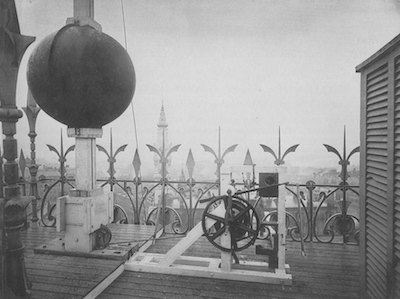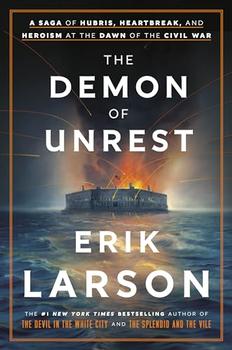Summary | Excerpt | Reviews | Beyond the Book | Read-Alikes | Genres & Themes | Author Bio

Critics' Opinion:
Readers' Opinion:
First Published:
May 2018, 432 pages
Paperback:
May 2019, 416 pages
 Book Reviewed by:
Book Reviewed by:
Rory L. Aronsky
Buy This Book
This article relates to The Perfectionists
 You have a job interview at 9:30. You plan to leave at 8:50. It's really only a 10-minute walk, but the path cuts through pleasant tree-lined neighborhoods and you know you'll take extra time meandering. Right now, it is 8:45 – or around 8:45 anyway. The DVR time atop the TV says 8:46. The microwave and oven times both say 8:47. And your watch, well, your watch, despite a new battery, inexplicably says 8:41. Your phone, by the way, says 8:45, but to paraphrase the classic band Chicago, does anybody really know what time it is anymore?
You have a job interview at 9:30. You plan to leave at 8:50. It's really only a 10-minute walk, but the path cuts through pleasant tree-lined neighborhoods and you know you'll take extra time meandering. Right now, it is 8:45 – or around 8:45 anyway. The DVR time atop the TV says 8:46. The microwave and oven times both say 8:47. And your watch, well, your watch, despite a new battery, inexplicably says 8:41. Your phone, by the way, says 8:45, but to paraphrase the classic band Chicago, does anybody really know what time it is anymore?
Actually, there is one person. At one point in The Perfectionists, Simon Winchester states that he's writing the chapter "to the steady beat of a Seth Thomas thirty-day kitchen clock." When Winchester needs to reset it about every month, he calls the time recording from the U.S. Naval Observatory Master Clock, which "operates much like grandfather clocks do: with pendulums. More precisely: a set of the most sophisticated pendulums ever built, carefully counting the "swings" of atoms' radiation with a precision unknown anywhere else in the universe." And it's because of the U.S. Naval Observatory Master Clock that the Internet, cell phones and GPS always know what time it is. Demetrios Matsakis is the Naval Observatory Time Service Department's chief scientist. He oversees the dozens of atomic clocks whose data combines to present the time through the Master Clock.
 The U.S. Naval Observatory got involved in timekeeping in 1845, because ships on the Potomac needed exact time to calculate their own latitude and longitude. Then located in Foggy Bottom, the Observatory put up an enormous brass-colored time ball on its roof that was dropped every day at noon, and the ships on the Potomac set their clocks that way. Each city kept its own time, which relied on the sun's position at noon. So Washington was seven minutes behind Philadelphia, which was five minutes behind New York and so on. The railroads kept their own time inside the train cars, which produced quite the headache because different rail lines ran on different clocks than the towns they served. The railroad lobby then pushed for standardizing U.S. time, and the time zones we know today emerged. Because of what it had done in giving ships the exact time, the Naval Observatory became the official timekeeper for the nation. To chronicle what's happened in Naval Observatory timekeeping from then to now would require another exhaustively-researched book from Simon Winchester, so it'll be sufficient to briefly examine the devices that, in combination, form the Master Clock.
The U.S. Naval Observatory got involved in timekeeping in 1845, because ships on the Potomac needed exact time to calculate their own latitude and longitude. Then located in Foggy Bottom, the Observatory put up an enormous brass-colored time ball on its roof that was dropped every day at noon, and the ships on the Potomac set their clocks that way. Each city kept its own time, which relied on the sun's position at noon. So Washington was seven minutes behind Philadelphia, which was five minutes behind New York and so on. The railroads kept their own time inside the train cars, which produced quite the headache because different rail lines ran on different clocks than the towns they served. The railroad lobby then pushed for standardizing U.S. time, and the time zones we know today emerged. Because of what it had done in giving ships the exact time, the Naval Observatory became the official timekeeper for the nation. To chronicle what's happened in Naval Observatory timekeeping from then to now would require another exhaustively-researched book from Simon Winchester, so it'll be sufficient to briefly examine the devices that, in combination, form the Master Clock.
 At the Observatory, down the hall from Matsakis' office, some of the devices reside in environmentally controlled rooms, such as hydrogen masers. Then, in a separate room, there are the cesium clocks, which look like they've been placed in refrigerators with glass doors. An article in the Washingtonian describes the process of finding the official time: "Masers are sprinters, best at keeping time over the short term - a few days - while cesium clocks keep better time over weeks and months. Official US time incorporates readings from both - around a dozen masers and a few dozen cesiums. But because each clock ticks ever so slightly differently, the Time Service Department has picked one maser as the clock and uses other devices to tweak its output every hour."
At the Observatory, down the hall from Matsakis' office, some of the devices reside in environmentally controlled rooms, such as hydrogen masers. Then, in a separate room, there are the cesium clocks, which look like they've been placed in refrigerators with glass doors. An article in the Washingtonian describes the process of finding the official time: "Masers are sprinters, best at keeping time over the short term - a few days - while cesium clocks keep better time over weeks and months. Official US time incorporates readings from both - around a dozen masers and a few dozen cesiums. But because each clock ticks ever so slightly differently, the Time Service Department has picked one maser as the clock and uses other devices to tweak its output every hour."
This collection of devices is called Master Clock 2, which has been at work since 1995. There was a Master Clock 1 for a time, and the Department alternated between the two, but when they scaled back to one, Master Clock 2 happened to be keeping time, so it became the official clock. There are also backup clocks in other buildings around the campus, so in case fiery disaster befalls one of the buildings, the backups can continue on.
Simon Winchester uses the time recording phone number for the Naval Observatory Master Clock. The Observatory helps keep the Internet on time with most computers and services synchronizing with the Master Clock every hour or so. The Observatory also corrects and updates the clock for the GPS Master Control Station at Schriever Air Force Base in Colorado and provides time for military satellites, which require even greater accuracy.
Although we never have enough time, we can be sure that the time we do have is accurate.
Naval Observatory Master Clock
Demetrios Matsakis, courtesy of www.ellines.com
Example of a Time Ball (the 1881 Boston Time Ball)
Filed under Medicine, Science and Tech
![]() This "beyond the book article" relates to The Perfectionists. It originally ran in July 2018 and has been updated for the
May 2019 paperback edition.
Go to magazine.
This "beyond the book article" relates to The Perfectionists. It originally ran in July 2018 and has been updated for the
May 2019 paperback edition.
Go to magazine.




Your guide toexceptional books
BookBrowse seeks out and recommends the best in contemporary fiction and nonfiction—books that not only engage and entertain but also deepen our understanding of ourselves and the world around us.